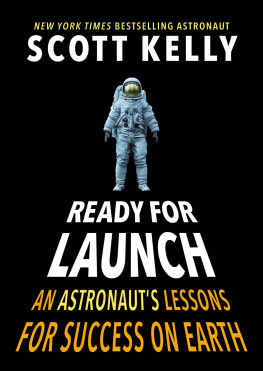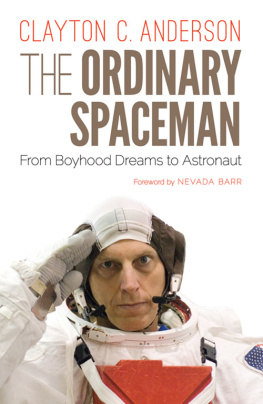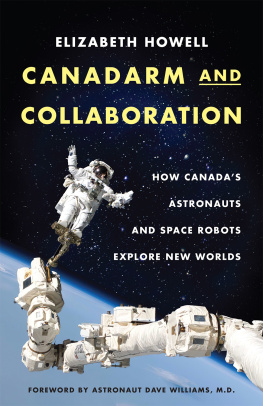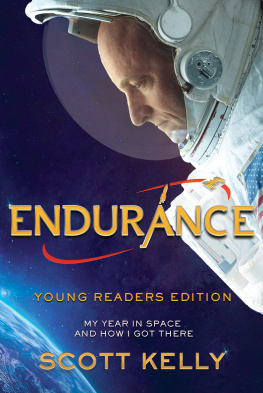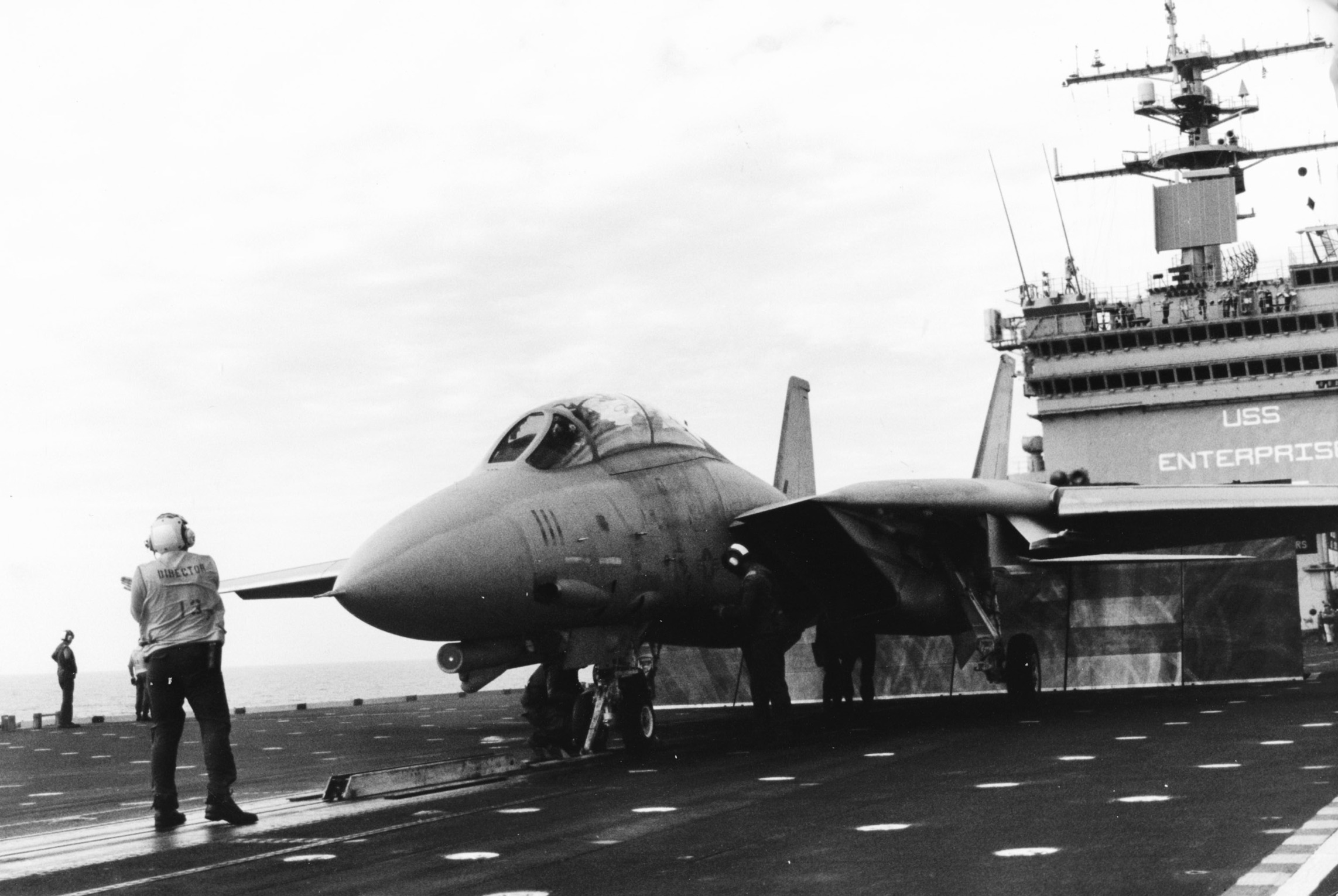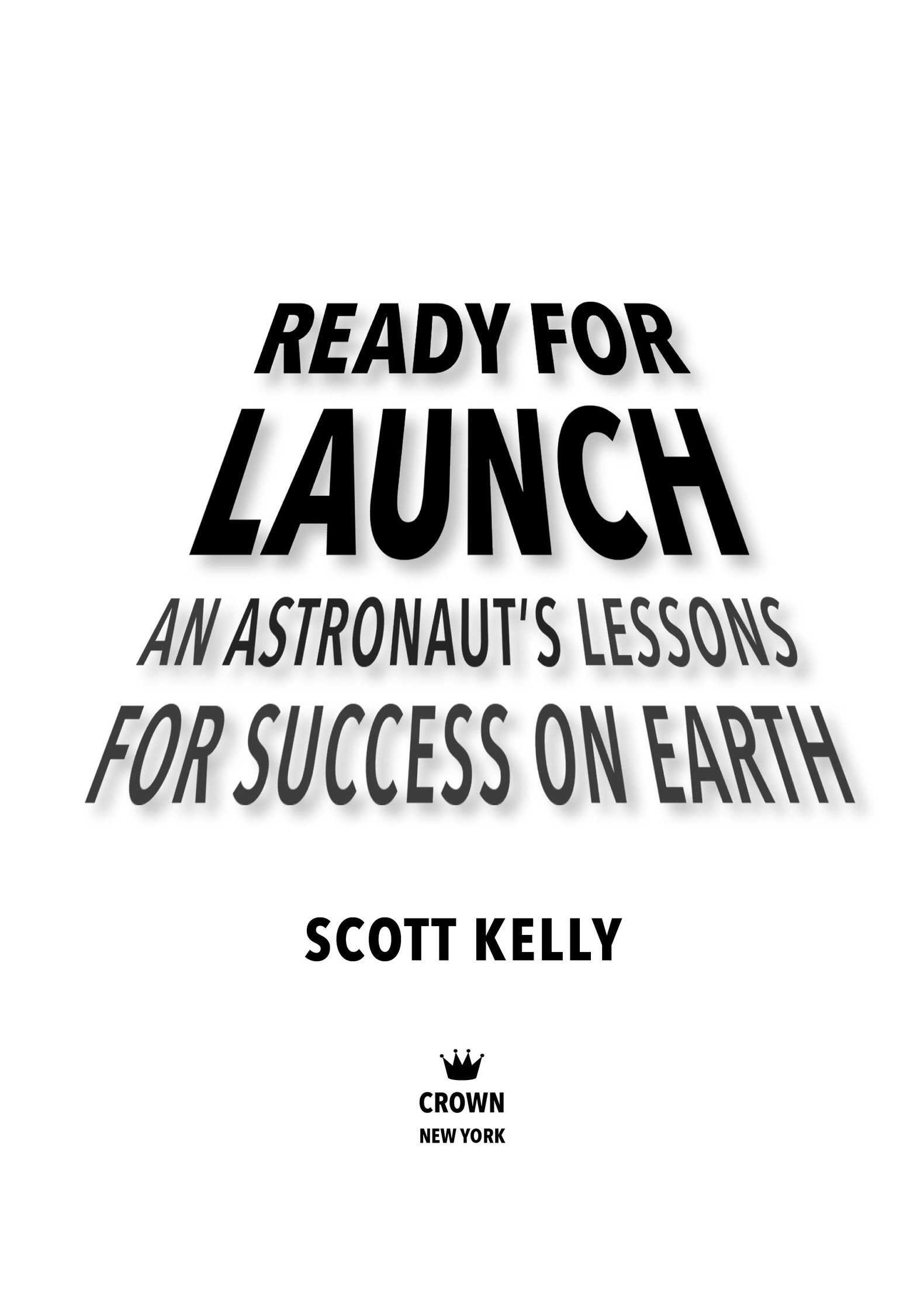Me, in the cockpit of an F-14 Tomcat, ready to launch off the deck of the USS Enterprise.
Text copyright 2022 by Mach 25 LLC
Cover art used under license from Shutterstock.com
All rights reserved. Published in the United States by Crown Books for Young Readers, an imprint of Random House Childrens Books, a division of Penguin Random House LLC, New York.
Crown and the colophon are registered trademarks of Penguin Random House LLC.
Photograph credits: Scott Kelly:
Visit us on the Web! GetUnderlined.com
Educators and librarians, for a variety of teaching tools, visit us at RHTeachersLibrarians.com
Library of Congress Cataloging-in-Publication Data
Names: Kelly, Scott, author.
Title: Ready for launch: an astronauts lessons for success on earth / Scott Kelly.
Description: First edition. | New York: Crown, [2022] | Audience: Ages 12
& up | Audience: Grades 1012 | Summary: Using ten life-changing moments
from his path to space, Astronaut Scott Kelly shares his advice for
mastering fear and failure, and turning our daily struggles into rocket
fuel for successProvided by publisher.
Identifiers: LCCN 2021040334 (print) | LCCN 2021040335 (ebook) |
ISBN 978-1-5247-6432-6 (hardcover) | ISBN 978-1-5247-6434-0 (ebook)
Subjects: LCSH: Kelly, Scott, 1964Juvenile literature. |
SuccessJuvenile literature. | Conduct of lifeJuvenile literature. |
AstronautsUnited StatesBiographyJuvenile literature.
Classification: LCC TL789.85.K45 A3 2022 (print) |
LCC TL789.85.K45 (ebook) | DDC 629.450092 [B]dc23
Ebook ISBN9781524764340
Random House Childrens Books supports the First Amendment and celebrates the right to read.
Penguin Random House LLC supports copyright. Copyright fuels creativity, encourages diverse voices, promotes free speech, and creates a vibrant culture. Thank you for buying an authorized edition of this book and for complying with copyright laws by not reproducing, scanning, or distributing any part in any form without permission. You are supporting writers and allowing Penguin Random House to publish books for every reader.
ep_prh_6.0_139683237_c0_r0
To my son Charlie, youve taught me so much.
Contents
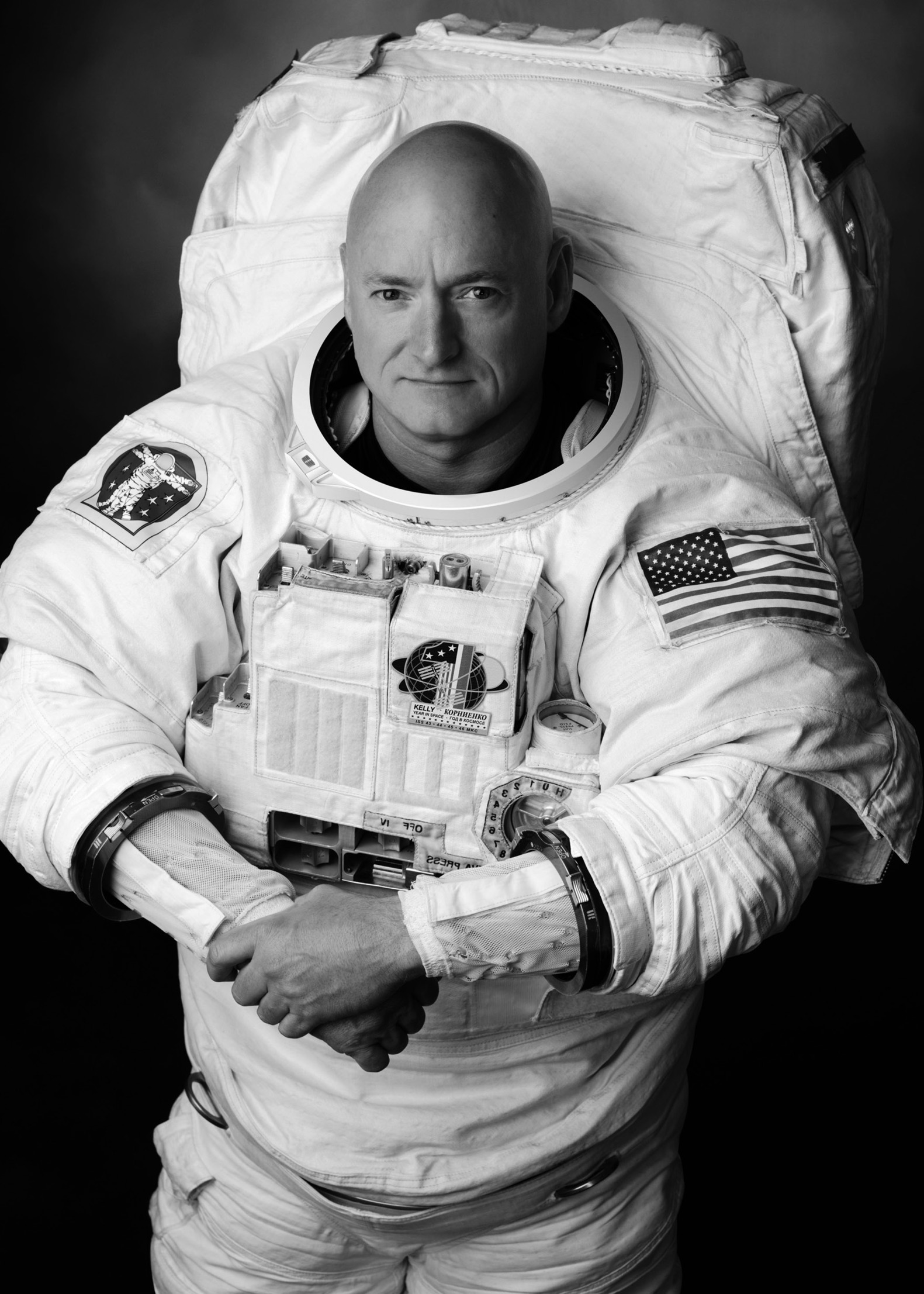
INTRODUCTION
If you told my friends and family when I was a kid in West Orange, New Jersey, that I would grow up to spend 520 days in space, they probably would have laughed. I might have laughed too.
You were more likely to find me climbing a treeor a houseor a buildingthan focusing in school.
Im a former NASA astronaut and probably best known for having spent a year on the International Space Station. During our record-breaking mission, my cosmonaut colleague, Mikhail (Misha) Kornienko; my twin brother, Mark; and I were part of an experiment to better understand the long-term impacts of spaceflight so that other humans might someday be able to make the journey to Mars. I was commander of two different crews over the course of the mission, and it was one of the privileges of my life.
What can you learn from my life in spaceboth preparing for it on the ground and orbiting Earth at more than 17,000 miles per hour? The answers might surprise you.
I want to share some of the things Ive learned that you might not expectlessons about leadership skills on a dark night on an aircraft carrier in the middle of a churning sea, lessons about the fear you feel with 7 million pounds of engine thrust exploding underneath you, and most of all, lessons about how failure can be a powerful tool to change your life.
Theres an idea out there that astronauts are always perfect. Failure is not an option, right?
Thats why I want to take you through some of my life experiences, so you can see why thats just not true. I believe that everyday human failuresif handled correctlycan be one of our greatest opportunities to learn, grow, and succeed.
And I want to show you how.
This book isnt just for people who want to be astronautsalthough I do think I have a thing or two to teach about that. I wrote this for anyone who has a dream or a goal but isnt sure they have what it takes to achieve it.
Ive had an unusual life. Ive been a raw recruit, a fighter pilot, a guinea pig, a cancer survivor, an Instagram trend, a space shuttle and space station commander, a late-night TV show guest, a two-time New York Times bestselling author, a husband, and a dad to two amazing kidsand I learned something from all of it.
When I got home to Earth on March 2, 2016, after my year in space, it took me nearly eight months to feel normal again. My vision had changed, and so had my DNA. Some changes still persistmaybe, most of all, the change in my perspective.
My hope is that by the end of this book, your perspectiveabout yourself, about whats possible, and about your place in the worldwill change too.
So lets get started and get ready for launch!
1
FEAR TO TAKE FLIGHT
When I was a kid, I was fearless. I ran with scissors and other sharp objects. Id climb as high as I could, and then jump right off.
When I was in the eighth grade, my family and I went on a cruise to the Bahamas. We werent wealthy by any measure, but I think my dad had won some money on a Super Bowl poolso there we were.
It was the first time I had been out of the country, and the ship was docked at a port in Nassau. I dont remember much about the buffet or onboard entertainment because I was busy jumping off the back of the ship at the challenge of another young guest. Today, that kind of thing goes viral, and not in a positive way. Back then, there was a much smaller audience for my risky behavior. I was lucky to surface in one piece. But I was a slow learner.
It wouldnt be the last time I jumpedor, more accurately, fellfrom the back of a ship.
When I was on a port call in Spain aboard a training ship in college, some of my classmates and I hatched a plan to sneak ashore for a night of excitement. We devised a scheme to use a ladder to climb down to the dock. I was the first to go. But the ladder wasnt secured, so I fell about fifty feet directly into the water with a heavy rope-and-wood ladder wrapped around me. Disappearing into the dark waters didnt even faze me at the time. It was just another college prank.
This is the kind of story that you laugh about later, but my casual attitude about falling off large boats was not the quality that showed I had the right stuff to be an astronaut. I didnt know it at the time, but that kind of fearlessness was exactly what I would need to overcome if I was going to survive.
My experience of fear started to change when I was in flight school learning to fly the TA-4J Skyhawk, the US Navys advanced jet trainer. I remember one particular day at Goliad Field, a little airstrip in the middle of the grasslands of southeast Texas, where I was practicing the skills Id need to qualify to land on an aircraft carrier. It was uneventfulI did my ten landings and turned around to come home. When I got out of the plane and came up into the ready room, it was clear that something had happened. The other pilots in my class were all looking somber. And quiet.

